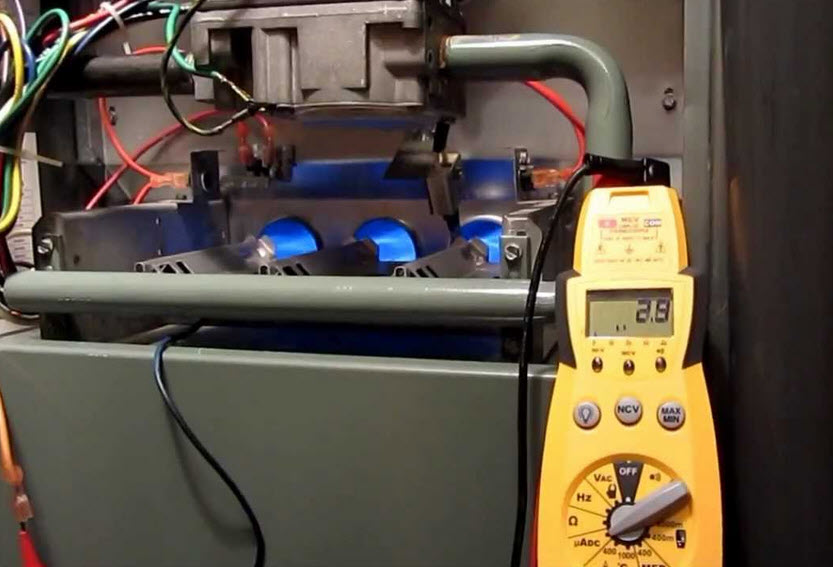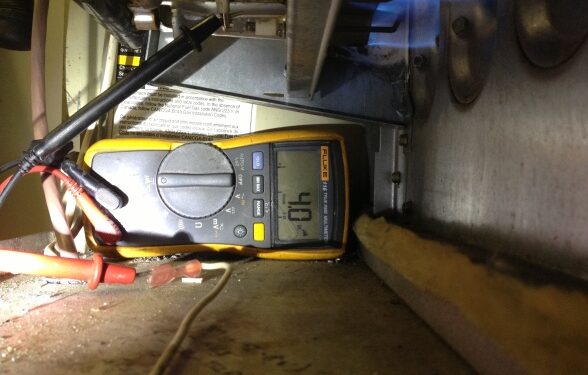The winter season usually has people escaping the outdoors and hibernating in the comfort of their own homes. One household appliance essential in surviving these icy cold temperatures is the furnace. A furnace heats the space in your home through hot air circulation, providing fast heat and high indoor air quality.
It’s no surprise that people fear when their furnaces stop operating on a frigid night in the middle of winter.
The best thing to do is to prevent this scenario from happening. And you can do this by frequently checking and testing your flame sensor. (as you read on, you will find out how to tests flame sensor)
What is a flame sensor?
A flame sensor is a vital component of your furnace. The primary purpose of a flame sensor is to detect a flame in a furnace. And if it doesn’t detect a flame, it acts as a safety switch and shuts down your entire system to prevent a possible explosion of the unit.
The flame sensor acts as a regulator during the ignition cycle. A gas furnace undergoes a process where either a hot surface ignitor or a spark is used to ignite the gas. The flame sensor generates an electrical current quantified in micro-amps when the gas is ignited. (you will also get to know how to test a flame sensor on a gas furnace; its the same tips)
If your furnace’s control board doesn’t read the proper required levels of micro-amps, this will trigger the furnace to stop giving the system fuel, thus avoiding a possible explosion.
Expert tips for testing your flame Sensor
Having established the importance of the flame sensor to the smooth operation of your furnace; then damage to it or a faulty flame sensor can significantly affect the operational ability of your furnace.
Signs of a damaged or faulty flame sensor may include your furnace constantly shutting down after starting up. In such a situation, if the igniter is working well, it would suggest a problem within the flame sensor.
When the flame is present, and the sensor fails to detect it, the sensor is either faulty or dirty. The sensor will keep triggering the gas valve to close, thus shutting down your HVAC system. The only way to ensure that your flame sensor is working is by testing it. So, read more to find out how to test a flame sensor.
Here are eight simple steps to test your flame sensor:
1) Remove the doors to the furnace
The first step is relatively simple: remove the doors to the furnace to expose the burner assembly.
2) Identify the flame sensor
This is a crucial part of how to test a furnace flame sensor. The igniter and the flame sensor are both located on the path where the flames are coming out; they are often found on opposite ends of the burner assembly. Make sure not to mix them up. The flame sensor usually has one wire attached to it, while the igniter has two wires.
3) Disconnect the wire
Once you have identified the flame sensor, disconnect the wire attached. Take your multimeter and connect one of the probes coming out of the meter to the wire you just disconnected. Stick the probe between the insulation and the back of the clip so as not to loosen the connection when you reconnect the wire. Make sure your multimeter can read DC micro-amps (μA).

4) Put the other lead on the end of the flame sensor where the wire was connected
Connect the lead of your multimeter to the end of the flame sensor where the wire was connected. This will help you get a reading of the flame sensor. You may need it to hold it in place if you don’t have an alligator clip at the end of your probe.
5) Adjust the thermostat, so the furnace comes on
Someone else can do this for you, or you can get the app on your phone to assist you with this. Most modern devices allow this.
6) Set your meter to measure micro-amps
As soon as the flame is established, you should see a micro-amp reading on your meter. Check your furnace owner’s manual to verify the reading that should be obtained; the usual readings range between 1-4amps. You don’t want it reading too low or too high. If it is out of range, clean the flame sensor and test again to see if it fixes the problem.
7) Reconnect wire back to the end of the flame sensor
Reconnect the wire back to the flame sensor as you found it.
8) Put the doors back on
Put the cover doors back onto the furnace, and you should be good to go. If cleaning the sensor did not return the readings to normal levels, thus assisting your furnace unit in functioning smoothly again, consider contacting an HVAC specialist to inspect your unit further.
Cleaning the flame sensor
When cleaning the flame sensor, in cases where dust and debris have gathered on the sensor. Avoid touching the flame sensor to avoid getting oil on the flame sensor. Use something abrasive such as a dollar bill, fine sandpaper, or even an emery cloth.
Practice caution and do not be too aggressive as you could scratch the flame sensor and shorten its life. Cleaning the flame sensor once a year or once every couple of years could increase its lifespan by several years.
Conclusion
The flame sensor is an important component of your furnace unit. It acts as a safety element and regulates the functioning of your furnace, and can cause significant disruption if not well maintained.
Make sure you schedule regular maintenance from an HVAC maintenance expert to keep your home cozy during the winters. For more tips on how to clean your furnace’s flame sensor, visit https://andersonair.com/how-to-clean-a-flame-sensor-on-furnace/.






